Cognitive Straightening: A Full Exposure Illusion Session
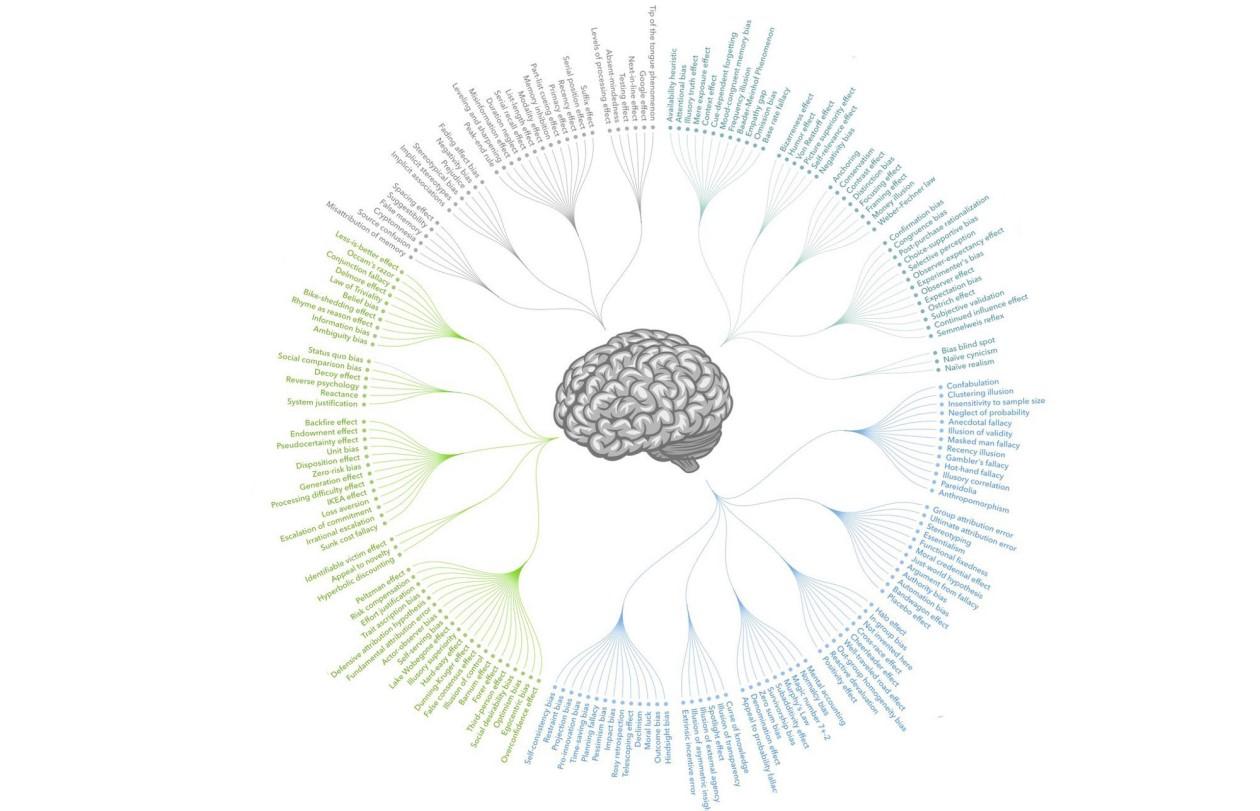
In the illustration above, you see a diagram of cognitive distortions - systematic deviations in the perception of reality. You can see the full version of the picture in Russian here , and follow this link to find the original data in JSON format. 175 fascinating cognitive bugs did not appear from scratch - everyone has a root cause, although in some cases, scientists have not fully decided on the source of the perception error.
Typically, distortion is preceded by an overabundance of information, difficulty in understanding, the need for a quick response or limitation of our memory. But the most common reason is the characteristics of human thinking. One of the most interesting types of errors is optical illusions. Today we’ll talk about this, because visual illusions best demonstrate how the brain can create a sense of reality within itself. By studying these mechanisms, we better understand how to make the virtual world indistinguishable from the physical.
Wild, wild world
From the point of view of evolution, the most interesting thing with the brain happened yesterday. While you are sitting in the office, the neurons do not doze off and are ready to send the body on a journey - away from the saber-toothed tiger, treacherously jumping from the top of the boulder.
Neurobiologist Bo Lotto claims that in reality we do not see reality, and our senses, designed to help us know the world around us, hinder its objective perception. To illustrate this thought, he proposed the following figure.

The square on the upper edge seems to us to be dark brown, on the side - brighter - brown-orange. However, this is just an illusion created by our brain. In reality, the cube looks different.

How is this possible? In very low light, individual colors are indistinguishable. From the point of view of survival, such a state of reality is fatal, since a predator hiding in the dusk can attack a person. And then a “perception error” comes to the rescue: an image is formed on the retina that differs from the object that created it.
For example, in the evening forest we perceive the movement of bushes as a living object. And just taking a closer look, we understand that in fact these are branches moving from a light breeze. The brain was wrong, but evolutionally, the “hit or run” mechanics are more beneficial than the “stop and analyze” reaction. It is better to mistakenly see different colors, movements and threats than to be eaten once.
Mueller-Layer Illusion: A Classic Cheat
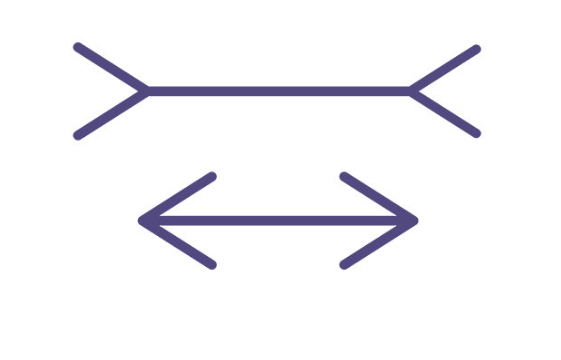
The German psychiatrist Franz Karl Muller-Layer in 1889 showed a geometrical-optical illusion associated with a distortion in the perception of lines and figures. The Müller-Layer illusion is that the segment framed by the tips facing outward appears to be shorter than the segment framed by “tails”, in fact the length of both segments is the same.
The psychiatrist also drew attention to the fact that the contemplator of the illusion, even after measuring the lines and listening to the explanation of the neurological background of the image, continues to consider one line shorter than the other. It is also interesting that this illusion does not look the same for everyone and there are people less susceptible to it.
Attempts have been made to explain the principle of the Mueller-Layer illusion:
- “Wrong size”: the image of the arrowheads falls on the part of the visual system in the retina that is responsible for processing image depth signals. As a result, the line with the tips pointing inward is interpreted as longer because it is perceived by the retina as being further away;
- “Conflicting signals”: arrowheads are perceived as a contribution to the length of the line, respectively, a longer overall line shape with inwardly directed tips causes the effect of increasing the line length;
- “Confusion”: the distance between the tips affects the perceived length. So, for the line with the tips pointing outward, the distance between the tips of the arrows seems less than the distance between the tips of the arrows directed inward on the other line.
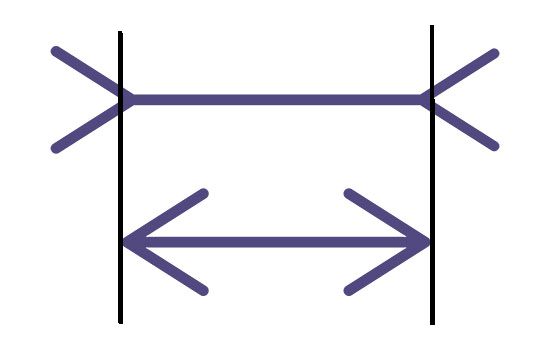
We still do not know the correct answer, so you can offer your version or support one of the existing ones. In any case, the work of Muller-Layer made a great contribution to the development of cognitive science. It became clear that the mind is a mechanism far from perfect, which can be mistaken even when working with accurate, at first glance, complete information cleared of the influence of emotions.
The brain processes information in a series of interconnected modules, and one module may not suspect the existence of another. Some modules are a kind of semi-independent departments of consciousness dealing with certain types of input and giving certain types of output. Their inner work is not accessible to human awareness - everything that we can access is the result of the work of hidden internal systems.
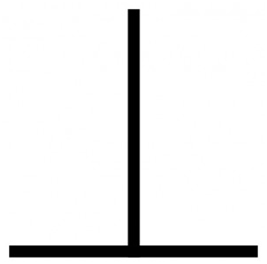
The Mueller-Layer illusion shows that some module continues to show us different line lengths, despite the understanding that this is wrong. Another widely known illusion of this kind is called vertical-horizontal. In the figure above, the vertical line seems longer than the horizontal, but in reality they are equal.
With the dynamic illusion of Mueller-Layer, it seems to us that the animated arrows change the length of the lines, but in reality it remains the same.
Pinna-Brelstaff illusion: brain bugs
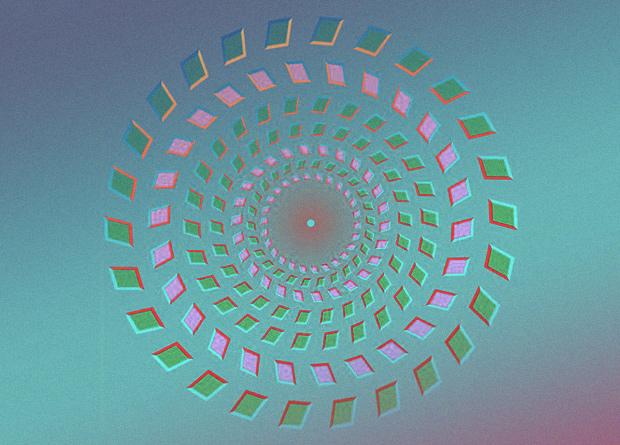
In 1990, thanks to the work of Bainio Pinna (University of Sassari, Italy), the first visual illusion appeared, demonstrating the effect of a rotating motion. In its modern form, the illusion was presented in 2000 in a joint article by Bainio Pinna and English psychologist Gavin Brelstaff.
The Pinna-Brelstaff illusion represents several concentric rings consisting of small rhomboid elements located at an angle in different directions in the inner and outer rings. Depending on whether you are approaching the image or moving away from it, the circles spin in different directions. But such an illusion will disappear if the diamonds are not tilted.
When you approach the monitor, the circles on the screen should become larger for your brain, but the neurons responsible for detecting movement “tell a lie” and create an illusion. It is believed that the illusion is caused by "bugs" of neurons in the visual cortex. When looking at a static picture, neurons in this area need 15 milliseconds more time to activate than with the usual perception of real complex movement.
Scientists believethat understanding the mechanics of motion perception will help to avoid situations in which it is dangerous to stimulate a motion-sensitive area in the cerebral cortex. So, incorrect visual content on the dashboards of cars, airplanes and other modes of transport can cause irreparable harm. Designers, directors, creators of multimedia content should also think about avoiding motion sickness and other discomfort for the audience.
Richard Russell's work: the illusion of gender differences
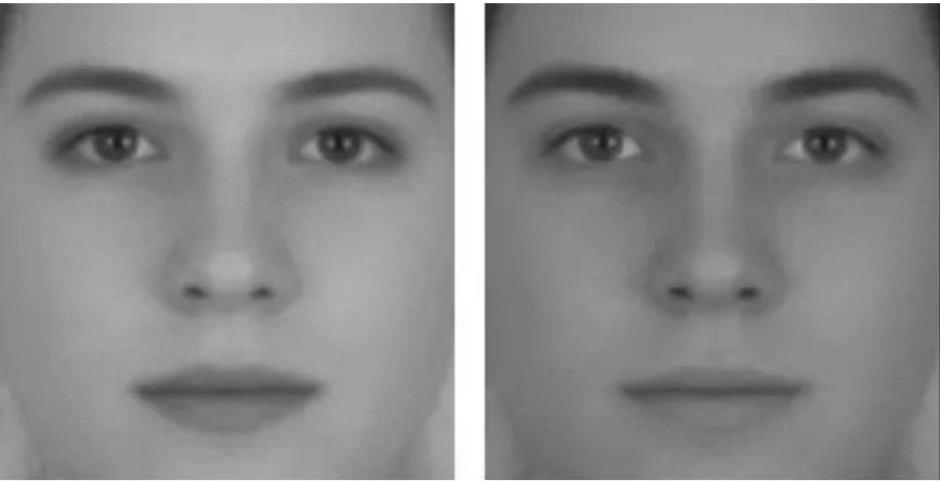
In the illustration you can see a man and a woman. But this is not so. In 2009, Richard Russell, a professor of psychology at Gettysburg College (USA), showed that both faces are actually versions of the same androgynous face.
The original picture was created on a computer by mixing averaged male and female faces. The only difference is the contrast: in the photo on the left, the contrast and illumination of the facial features are increased, on the right - reduced.
A person with a higher contrast is perceived as a female. It is not known exactly why it was so necessary from the point of view of evolution, but the female face has a greater contrast of illumination in the eyes, lips and surrounding skin than the male one.
Russell's original study is called “A sex difference in facial pigmentation and its exaggeration by cosmetics”. Contrast is an important signal for the perception of gender - the more contrasting the appearance from nature, the more beautiful a woman seems, so the makeup that creates contrast makes a woman more attractive.
Koffer's illusion: long lags
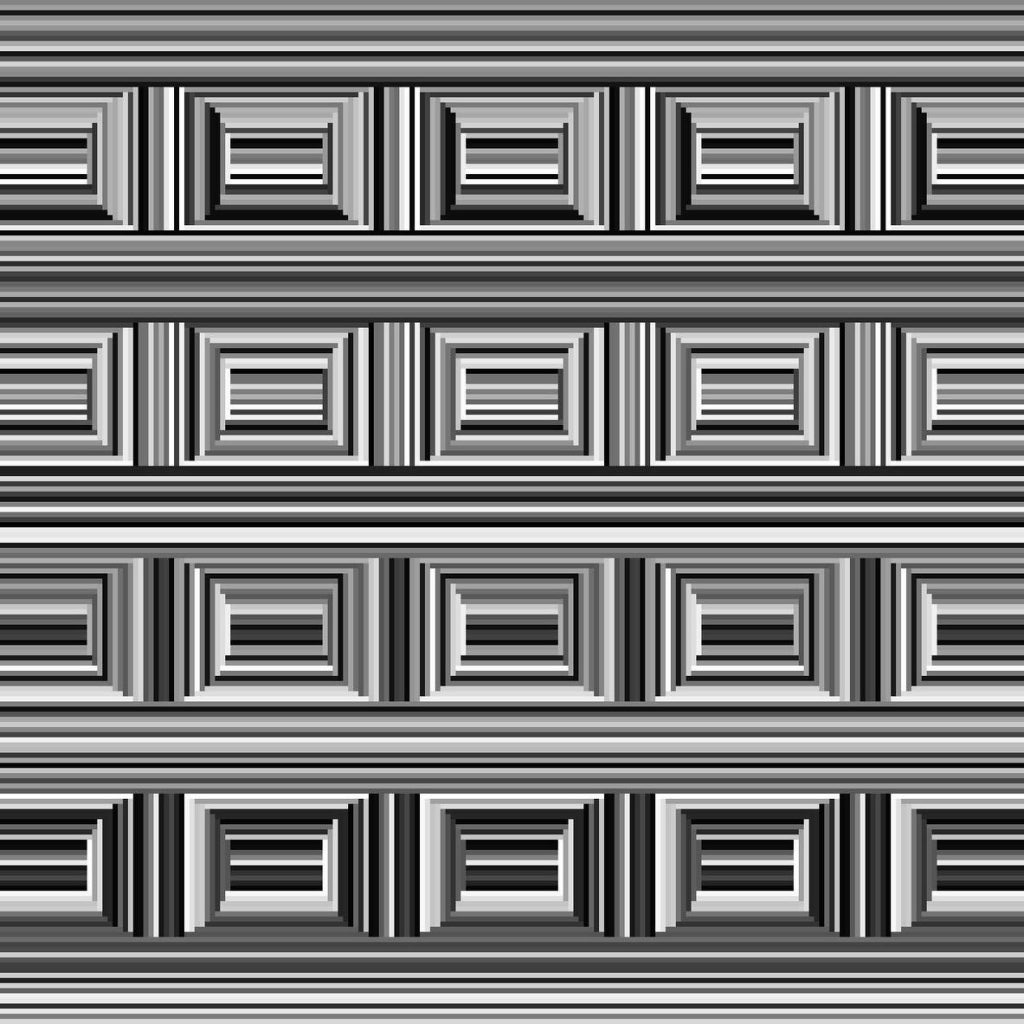
In the figure above, most people initially see only squares and only after a few seconds they begin to distinguish 16
Anthony Norcia of Smith Kettlevel Eye Research Institute (San Francisco, USA) in 2006 demonstrated the illusion of “coffer” - an architectural term for a series of recessed door panels of square, rectangular, or other shapes.
Koffer's illusion belongs to a large class of optical distortions in which a two-dimensional figure or a three-dimensional object can be seen in several clearly distinguishable ways. In neurobiology, there is evidence of the emergence of an illusion for some ambiguous figures - due to the fact that our brain is focused on the constant identification of objects.
We do not see the objects at once as a whole, but in the form of separate faces, contours and figures, which, after a short treatment, are grouped into something understandable to our consciousness. However, if the image is inherently ambiguous, the same set of equivalent elements can be interpreted differently - for example, to form a circle or rectangle.

The “Mask of Love” illusion taken from Gianni Sarkone’s book “Amazing Optical Illusions” works similarly, with the only difference being that the image of one face or two kissing faces does not have one dominant role - what you see depends on individual characteristics of your brain.

Interestingly, in a similar way, the brain not only processes information about objects, but also recognizes the faces of people. The brain reads a set of individual elements - the eyes, nose, mouth and ears. In addition to individual features, facial features take into account their relationship with each other and location. That is, a person is perceived as a whole system. The result is Thatcher's illusion, when it is difficult to detect local changes in an inverted portrait photo.

First inverted photo Margaret Thatcher seems normal, but if it again by 180 to misalignment of the eyes and mouth immediately catches the eye. In an inverted photograph, it is more difficult for the brain to evaluate the image whole - the information is "collected" separately for each element.
As soon as we are shown the right face, suddenly the perception of a single system is reconnected. The area of the cerebral cortex recognizes the face and determines the direction of the gaze, the amygdala and islet lobe analyze the facial expression, and the area in the prefrontal area of the frontal lobe and the brain system responsible for the feeling of pleasure evaluate its beauty.
Optical illusions in art
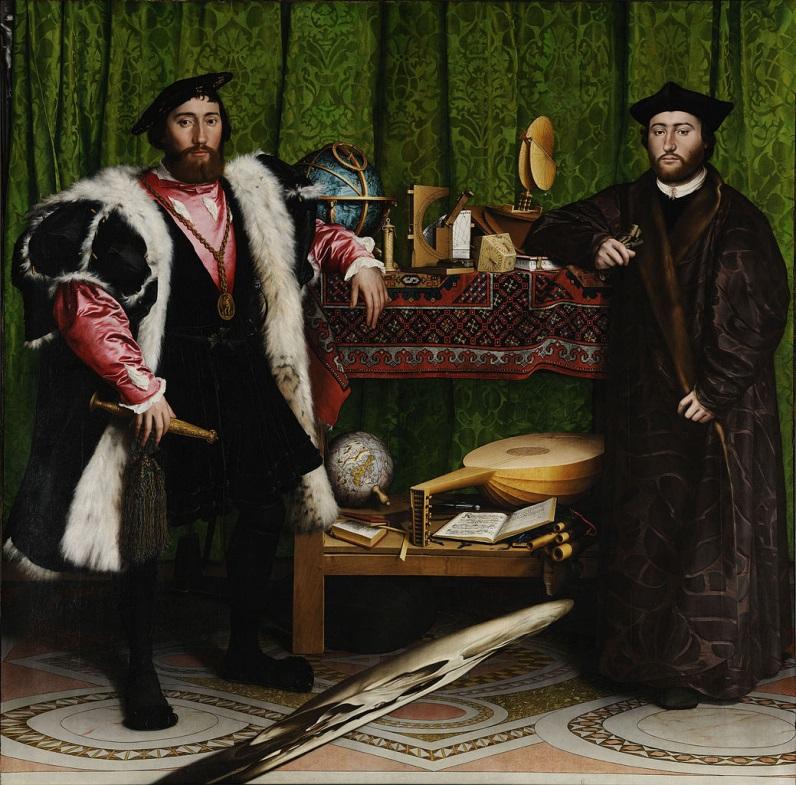
Optical illusions have been known to people for hundreds of years and, of course, have served as a source of inspiration for artists. In art, there is an artistic technique associated with optical displacement, which demonstrates an object of easily recognizable shape only from a certain point of view. It was called anamorphosis - from the Greek ἀνᾰ- (prefix with the meaning of repetition) and μορφή ("image, form").
The famous painting “Ambassadors” by Hans Holbein the Younger, written in 1533, conceals an opaque symbol of the eternal presence of death in everyday life, which only “seeing” reality in a deep understanding of being can see. The easiest way to demonstrate Holbein's skill in creating anamorphoses is through video.
Intentional image distortion creates a special effect. This technique was used by Maurits Escher. So, in the work of Belvedere, he created a two-dimensional image of the building for viewing the surroundings, free from the shackles of the three-dimensional world.
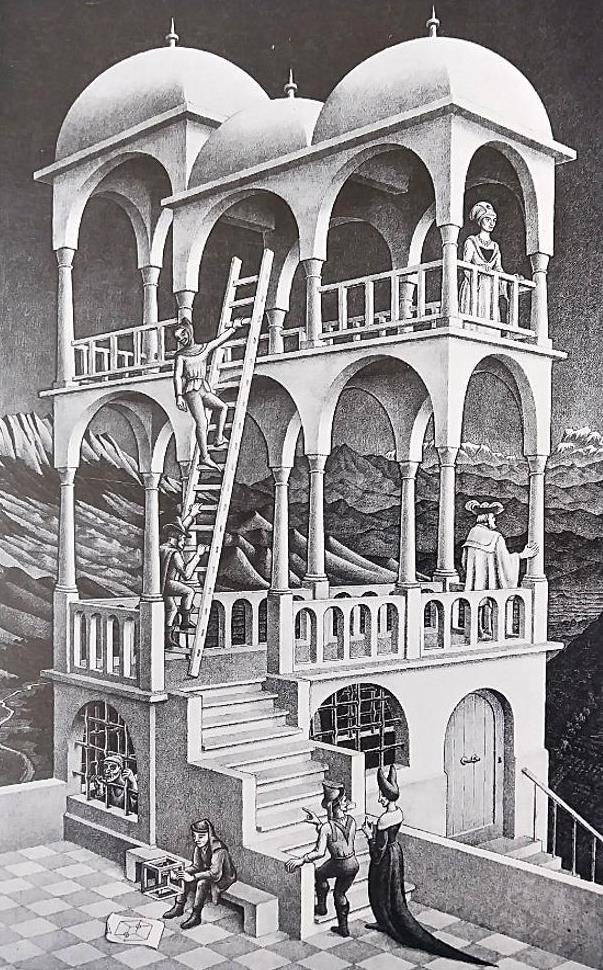
For the viewer, the columns on the second floor are the same size both in front and behind, but the columns at the rear are mounted higher. The viewer will also notice that the upper floor is located at a different angle than the rest of the building. The pillars on the middle floor stand at right angles, however the front pillars support the rear side of the upper floor, while the rear pillars support the front side.
The influence of neuroprocesses
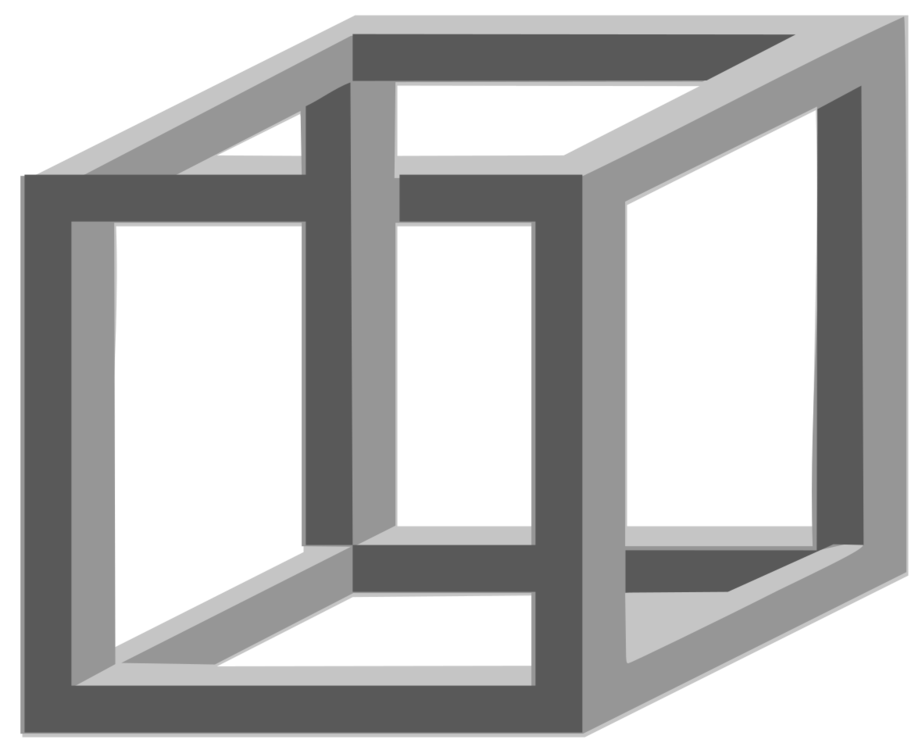
At the foot of the Escher Belvedere, a person looks at the Necker cube - this is another optical illusion, which is also called the impossible cube because of the edges that intersect in an impossible way. There is a hypothesis that neurophysiological channels in the human visual system selectively process depth information. These channels work on the principle of mutual complementation - every 2-3 seconds one is activated and the second is suppressed, or vice versa.
This hypothesis can also explain the phenomenon of more frequent change of options during prolonged observation. It is assumed that in this case, the recovery processes do not have time to go through completely and the change of one option to another is faster. Examples of multistable images in depth are called the illusion of a “tiled wall”, in which the rows of tiles seem curved, although they are not curved at all, the Schroeder staircase and other
hypotheses explaining the existence of various types of illusions are actually a great many. We need all of them to fully understand the processes of identification of ourselves and objects in reality. On the other hand, it is simply interesting to observe the illusions when even the ordinary perspective in the pictures is a real illusion of perception.
The popularity of cognitive and optical distortion has reached such heights that the Neural Correlate Society, with the support of the Mind Science Foundation, has regularly launched the contest “ Best Visual Illusions of the Year ”, where the number of interesting illusions literally ripples the eyes. Recommended for everyone.
